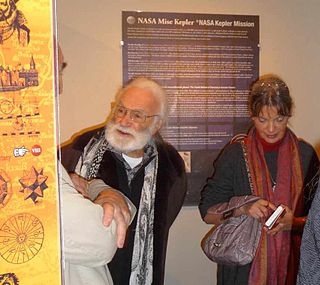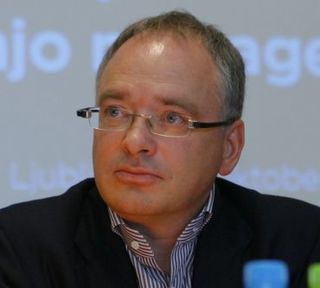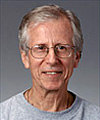Related Research Articles
In marketing, publicity is the public visibility or awareness for any product, service, person or organization. It may also refer to the movement of information from its source to the general public, often via the media. The subjects of publicity include people of public recognition, goods and services, organizations, and works of art or entertainment.

Karl H. Pribram was a professor at Georgetown University, in the United States, an emeritus professor of psychology and psychiatry at Stanford University and distinguished professor at Radford University. Board-certified as a neurosurgeon, Pribram did pioneering work on the definition of the limbic system, the relationship of the frontal cortex to the limbic system, the sensory-specific "association" cortex of the parietal and temporal lobes, and the classical motor cortex of the human brain. He worked with Karl Lashley at the Yerkes Primate Center of which he was to become director later. He was professor at Yale University for ten years and at Stanford University for thirty years.
Organization–public relationships is public relations between an organization and the public.
Mood management theory posits that the consumption of messages, particularly entertaining messages, is capable of altering prevailing mood states, and that the selection of specific messages for consumption often serves the regulation of mood states. Mood management theory now belongs to a larger group of theoretical approaches which speak on media content and how it plays a role in mood management. Mood optimization is a current affective sate of media mood management.
The situational theory of publics theorizes that large groups of people can be divided into smaller groups based on the extent to which they are aware of a problem and the extent to which they do something about the problem. For example, some people may begin uninformed and uninvolved; communications to them may be intended to make them aware and engaged. Communications to those who are aware but disengaged may focus on informing them of ways in which they could act. Further classifications are made on the basis to which people are actively seeking or passively encountering information about the problem.
James Renwick Taylor, sometimes known as Jim Taylor, was a Canadian academic and Professor Emeritus at the Department of Communication of the Université de Montréal, which he founded with Annie Méar and André H. Caron Ed.D in the early 1970s.
Norman Henry Anderson was an American social psychologist and the founder of Information integration theory.

Dejan Verčič is a communication researcher and public relations theorist.
Reinforcement theory is a limited effects media model applicable within the realm of communication. The theory generally states that people seek out and remember information that provides cognitive support for their pre-existing attitudes and beliefs. The main assumption that guides this theory is that people do not like to be wrong and often feel uncomfortable when their beliefs are challenged. According to Luthans and Stajkovic (2009), reinforcement theory suggests that the environment and its consequences significantly influence behavior, with positive reinforcement being one of the most substantiated principles in psychology. This theory is crucial in understanding how individuals process information that aligns with their attitudes and how reinforcement can shape and sustain communication patterns.
George Mandler was an Austrian-born American psychologist, who became a distinguished professor of psychology at the University of California, San Diego.

Alvin P. Shapiro was an American physician and professor primarily at the University of Pittsburgh School of Medicine. Shapiro was the recipient of a Lasker Award and was known for his research in hypertension, behavioral sciences, and related diseases.
Charles M. Reigeluth is an American educational theorist, researcher, and reformer. His research focuses on instructional design theories and systemic transformation of educational systems to be learner-centered: personalized, competency-based, and largely project-based.

Robert S. Wyer Jr. is a visiting professor at the University of Cincinnati and professor (emeritus) at the University of Illinois, Urbana-Champaign. He received his doctoral degree from the University of Colorado. Wyer Jr.'s research interests cover various aspects of social information processing, including:

Howard Charles Wainer is an American statistician, past principal research scientist at the Educational Testing Service, adjunct professor of statistics at the Wharton School of the University of Pennsylvania, and author, known for his contributions in the fields of statistics, psychometrics, and statistical graphics.
The Excellence theory is a general theory of public relations that “specifies how public relations makes organizations more effective, how it is organized and managed when it contributes most to organizational effectiveness, the conditions in organizations and their environments that make organizations more effective, and how the monetary value of public relations can be determined”. The excellence theory resulted from a study about the best practice in public relations, which was headed by James E. Grunig and funded by the Foundation of the International Association of Business Communicators (IABC) in 1985. Constructed upon a number of middle-range theories, and tested with surveys and interviews of professionals and CEOs in the United States, the United Kingdom, Canada, and South Korea, the Excellence theory provides a “theoretical and empirical benchmark” for public relations units.

Richard M. Perloff is an American academic. He is professor of communication at Cleveland State University, where he has taught since 1979. He has written on persuasion, on political communication, on the psychology of perception of the effects of mass media, and on the third-person effect.
Larissa A. Schneider Grunig is a public relations theorist and feminist, and she is known as one of the most published and influential scholars in public relations. A professor emerita at the University of Maryland, College Park, Department of Communication, Grunig taught public relations and communication research since 1979. Based on a content analysis of three academic journals from their foundation through the year 2000, Grunig was recognized as one of the five most prolific authors contributing to public relations theory development. Her research focuses on public relations, development communication, communication theory, gender issues, organizational response to activism, organization power and structure, ethics, philosophy, scientific and technical writing, and qualitative methodology.
Introduced by William Benoit, image restoration theory outlines strategies that can be used to restore one's image in an event where reputation has been damaged. Image restoration theory can be applied as an approach for understanding both personal and organizational crisis situations. It is a component of crisis communication, which is a sub-specialty of public relations. Its purpose is to protect an individual, company, or organization facing a public challenge to its reputation.
Marianne Dainton is a scholar of interpersonal communication and a Professor in Communication at La Salle University in Philadelphia, Pennsylvania. Dainton has made substantial contributions to the communication field with several publications concerning relationship maintenance and personal relationships. In addition to her research, Dainton has contributed to mainstream press stories for the CBS Morning Show, Wall Street Journal, and The Philadelphia Inquirer concerning relationship maintenance. As an author, she is widely held in libraries worldwide.
Kathleen S. Kelly is an American public relations theorist and academic administrator. She is a professor and chair of the department of public relations at University of Florida. Kelly was the Hubert J. Bourgeois Research Professor in Communication at University of Louisiana at Lafayette. She served as associate dean of the Philip Merrill College of Journalism. Kelly is a Fellow of the PRSA.
References
- The Handbook of Public Relations (2001).
- 1 2 Curriculum vita, University of Maryland. Archived 2017-08-29 at the Wayback Machine Accessed July 16, 2017
- ↑ WorldCat item entry
- ↑ ] "The Four Models of Public Relations". Archived from the original on 2010-03-12. Retrieved 2010-03-02.
- ↑ WorldCat item record
- ↑ Worldcat item record